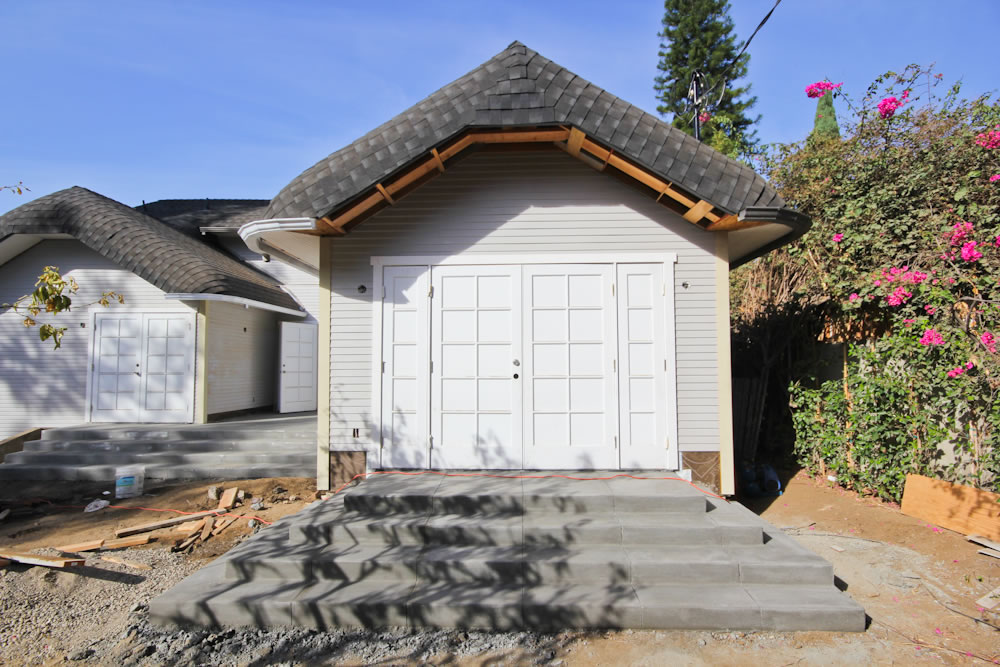
Here at JNO Construction & Design, we know your roof is not something to take for granted, as it requires some general care to keep it in good condition. Day in and day out, your roof stands against the elements, and over time this can leads to roofing issues. These problems can cause all sorts of maintenance requirements for the rest of your property, leading to quite a few headaches and expensive repairs. Here are ten roofing tips that can help you maintain your roof and ensure it lasts a long time:
- Spray Water To Find A Leak – To find a leak on your roof, take your garden hose up to the roof and gently spray water in different locations (not a lot though). Try to avoid doing this during the winter months, as the water can freeze or cause slippery, icy surfaces that make being on the roof dangerous.
- Fix Minor Leaks – It is important to fix any minor leaks you find before the rainy months when you cannot get up on the roof safely. Plus, fixing minor leaks will prevent them from becoming major leaks that can do a great deal of damage to your home.
- Clean Out The Gutters – If you neglect to clean out your gutters, water and leaves can build up inside the gutters, leading to leaks since water will not be able to flow out of the gutters. Clean them out regularly to keep their paths free of debris.
- Stop Dry Rot In Its Tracks – Dry rot is caused by a lack of ventilation. If your roof has dry rot, that portion will sag in somewhat and cause the roof shingles to dry out and then leak. You can prevent dry rot by installing a ridge vent.
- Think Safety First – Unfortunately, many people fall off their roofs while attempting to repair something like a leak or loose shingle. You should not work on your roof when it is windy, icy, or wet. Instead, wait until the weather is more pleasant so you can avoid slipping. Whenever you are on your roof, use a harness and wear rubber-soled shoes to prevent slippage.
- Keep Ice Build-Up Off Your Roof – If ice is allowed to build up on your roof during the wintertime, it can cause problems like interior leaks. This is not so much of a problem for our Los Angeles clients, but still important to keep in mind. Proper ventilation, rain and ice shields, and the installation of a drip edge can keep ice from building up on your roof.
- Inspect Materials – It is important to inspect the materials on your roof, including the shingles and nails. If nails and shingles have not been installed properly, they can play a big role in roof leaks. Be sure to give the materials on your roof a good looking over to ensure they are in good condition and installed properly.
- Inspect The Places Where Two Roofs Come Together – Take the time to check those places where two roofs come together. These are called valleys or ridges and they are common places for leaks due to water being able to get to these areas and pool.
- Be Diligent In Eliminating Leaks – Even though it is not always fun to find the source of a leak, it is necessary to do so. To find a leak, methodically check one area on your roof at a time while installing the shingles back in place as you move along.
- Call In The Experts For Help – If you have a roof installation or roof remodeling project to complete, JNO Construction & Design is here as your premier Los Angeles contractor. When you choose us, the work will be done efficiently, effectively, and to your specifications. JNO Construction & Design offers a wide range of roofing services that includes new roof constructions, renovations, old roof removal, repairs, and reinforcement. Contact us today by calling (310) 363-7980 so we can help you with your roofing project, regardless of its size or scope.
SHARE
Fatal error: Uncaught Error: Call to undefined function EdgeCore\CPT\Shortcodes\SocialShare\aalto_edge_addslashes() in /home/jnocon5/public_html/wp-content/plugins/edge-core/shortcodes/social-share/social-share.php:165 Stack trace: #0 /home/jnocon5/public_html/wp-content/plugins/edge-core/shortcodes/social-share/social-share.php(117): EdgeCore\CPT\Shortcodes\SocialShare\SocialShare->getSocialNetworkShareLink('pinterest', Array) #1 /home/jnocon5/public_html/wp-content/plugins/edge-core/shortcodes/social-share/social-share.php(88): EdgeCore\CPT\Shortcodes\SocialShare\SocialShare->getSocialNetworksParams(Array) #2 /home/jnocon5/public_html/wp-content/themes/aalto/framework/lib/edgtf.functions.php(1169): EdgeCore\CPT\Shortcodes\SocialShare\SocialShare->render(Array, NULL, 'edgtf_social_sh...') #3 /home/jnocon5/public_html/wp-content/plugins/edge-core/shortcodes/social-share/functions.php(39): aalto_edge_execute_shortcode('edgtf_social_sh...', Array) #4 /home/jnocon5/public_html/wp-content/themes/aalto/framework/modules/blog/t in /home/jnocon5/public_html/wp-content/plugins/edge-core/shortcodes/social-share/social-share.php on line 165


